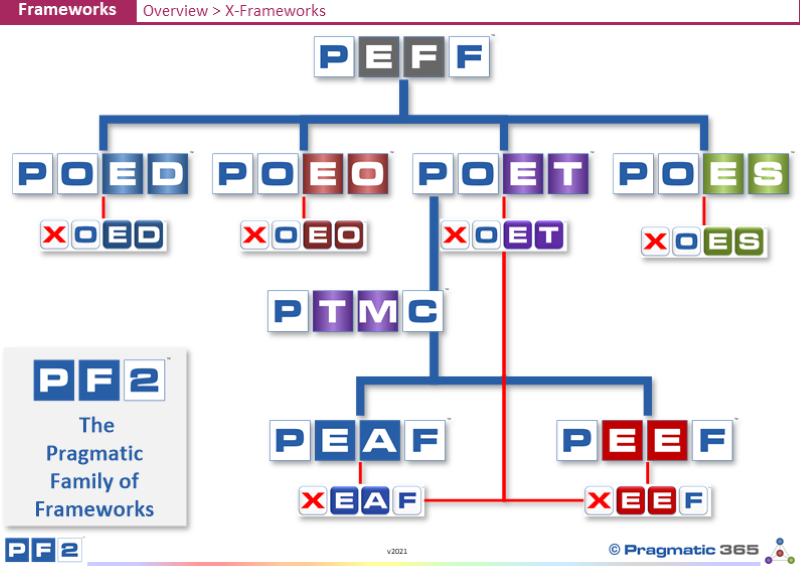
Any framework will never be 100% correct for 100% of
Enterprises. Therefore, it is reasonable for users of frameworks to view them
in terms of adopting and levering what works for them. This is generally
accepted. The question is, how?
The X-Frameworks and Ontologies illustrate the way an
Enterprise can use Pragmatic's Frameworks as a
basis to create their own Enterprise specific (X) frameworks by taking a Pragmatic Framework (or Ontology) and making the
necessary changes required, in terms of content, branding, naming etc. The “X”
is used as a placeholder that is meant to be replaced by an acronym specific to
your Enterprise.
...to read more, please Login or Register